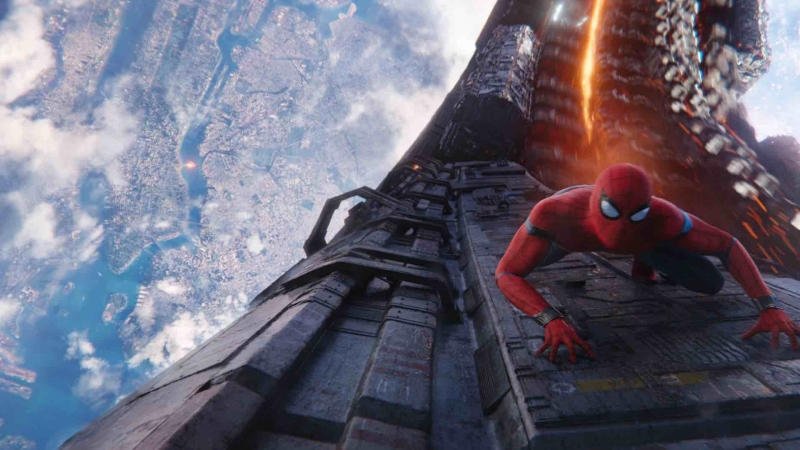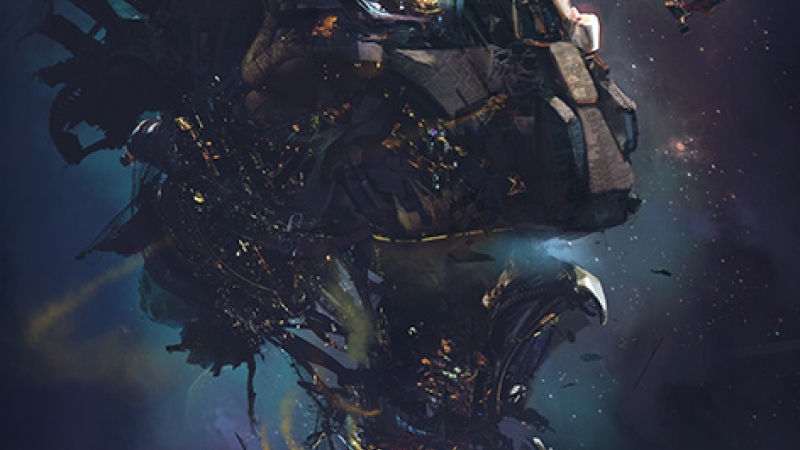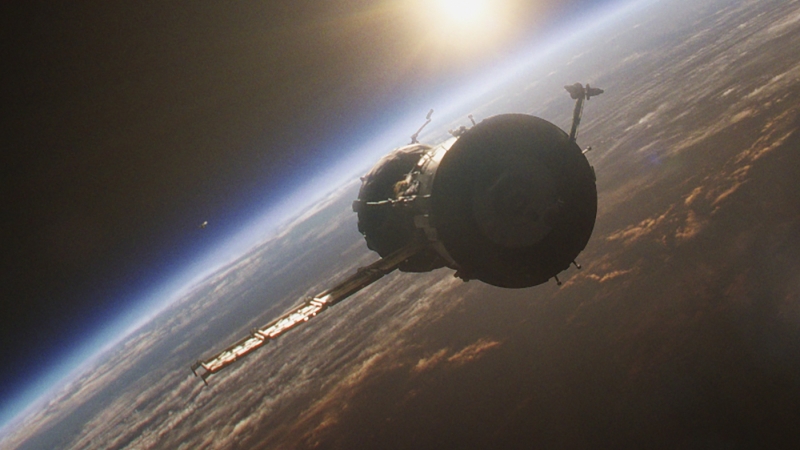
Gravity
Warner Bros. Pictures
Alfonso Cuarón’s remarkable blockbuster Gravity enjoyed fantastic critical success, collecting enough stars from film reviewers to fill the galaxy it so devotedly depicts. It may surprise some to learn that those mesmerising images were planned and created in London; from pre-production, through filming, to its extensive time in post-production. It's a multi award-winner too, scooping seven Oscars total and the three top visual effects prizes for Framestore: the Oscar, BAFTA and the VES Award.
Awards
-
Academy Award Winner
Best Achievement in Visual Effects
-
VES Award Winner
Outstanding Visual Effects
-
BAFTA Award Winner
Best Special Visual Effects
-
Satellite Award Winner
Best Visual Effects
'Gravity is the sort of thing you’d think Hollywood wouldn’t make simply because it isn’t possible.'
Empire
How Did We Do It?
When starting the project, no one guessed how much CGI would be needed to produce the final film. “There was a stage initially where it was going to be made with actors in real space suits,” shared Tim Webber, VFX Supervisor on the project, “they would have been hung up on wires on partial sets and we would have extended it and put in the background.” In the end considerably more of it is CGI than first discussed, and in fact considerably more of it is computer generated than real. In the majority of shots the only elements captured with a camera are the faces. The vastness of space, the Earth, the stars (all 30 million of them), the space shuttles, Hubble Telescope, the International Space Station (ISS), the copious and equally villainous fragments of debris, even the space suits: they were all made by visual effects artists at Framestore.

Zero Gravity
A sizable problem to solve was the simulation of zero-gravity. Collaborating with Bot & Dolly Motion Control and the on-set special effects team, cameras were strapped to huge robotic arms and actors George Clooney and Sandra Bullock were put in a variety of different rigs, many newly developed for the film. Then the solution of the lightbox was hit upon and the cramped LED box known on set as ‘Sandy’s cage’ took over a large part of the filming responsibility. A 20-by-10-ft. (6 by 3 m) structure, it was covered with 196 panels of 4,096 LED bulbs each to simulate the extreme light in outer space. The camera moved around Bullock, achieving the illusion that it is her that moves. It could zoom in and out from any position and it would race towards her and stop dead, just centimetres from her face. This highly unusual and groundbreaking VFX-led filming process led to the lightbox being named as one of the year’s best inventions by Time Magazine.

'When I was on set with the lightbox and the robots I thought, "I’ve never seen a set-up like this". I’d just never heard of anyone doing anything like it. I knew this film was going to be groundbreaking.'
Rich McBride - VFX Supervisor
The Space Station
Viewed from every angle, inside and out, and then stunningly destroyed, the International Space Station (ISS) was the biggest of Gravity’s thousands of asset builds – ending up as a 100 million polygon model. A big design challenge, the ISS, Hubble Telescope and the Atlantis and Explorer space shuttles are so iconic that many people will recognise them, so creating them in a photo-real way was a big undertaking. The team had to source reference photographs really carefully and question all design choices made. It’s a lot more complex way of building things than simply adding details just so the render looks prettier – this had to be functional and believable.


'The interior sets, which are all CG inside the ISS, were phenomenally detailed too. It took over a year to build everything. We never really stopped – we were constantly adding detail.'
Charles Howell - Senior Producer
Digitally Sewing Space Suits
As well as the sets, Framestore were also tasked with the creation of the costumes, specifically Sandra and George’s space suits. 'The goal, which sounded simple enough, was to make the astronauts look real', says Head of Rigging Nico Scapel. 'The complexity there is that they had to look right, from far away to extreme close-up, and they had to move right – every fold on their suits – across very longs shots and changing lighting conditions'. They were unthinkably detailed and each suit could have a few million polygons, between ten and a hundred times the resolution the team might normally have worked at. CFX artists used a program that was designed for the fashion industry to digitally sew the suits together. For the NASA suit, the starting point was a selection of photos and video references. The team had to get the right amount of fabric to ensure that it fits the character properly, turning them into digital tailors of a sort.
Reviews
'To say this is a marvel of camerabatics, of visual choreography, animation and physical acting is to undersell Cuarón’s gift as a storyteller who takes the audience on a nail-gnawing space flight.'
Time Magazine
'...seeing is what it's mostly about here, seeing space as if the film was actually shot there. It's a wonderful cinematic jolt to watch this film for the first time, as it looks as if it had been filmed, as it were, on location.'
Hollywood Reporter
'One of the most sophisticated and enveloping visions of space travel yet realised onscreen. It falls among that increasingly rare breed of popular entertainments capable of prompting genuine “How did they do that?” reactions from the viewer.'
Variety
'This isn't just the best-looking film of the year, it's one of the most awe-inspiring achievements in the history of special effects cinema.'
Time Out New York
Services

VFX
Known for our prowess in the VFX industry, Framestore's work ranges from key animated characters to complex environments and effects.

Capture Lab
Framestore's motion capture facility and shooting space, facilitating complex VFX and animation work.

Art Department
Creating the key first looks for a film's characters, environments and features.

Previsualisation
We help directors previsualise their films in CG in order to help them make creative decisions.

Animation
Eye-catching animation work that continues to push the boundaries of digital storytelling.





